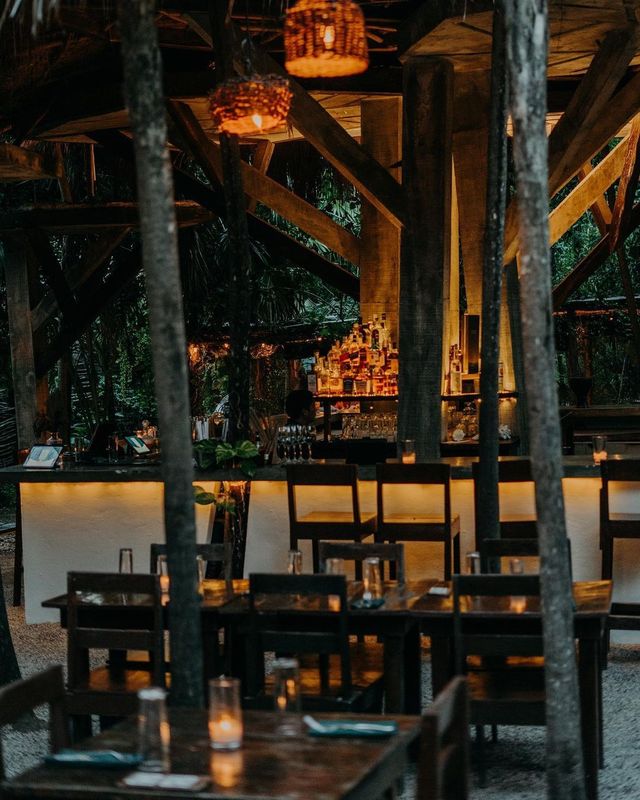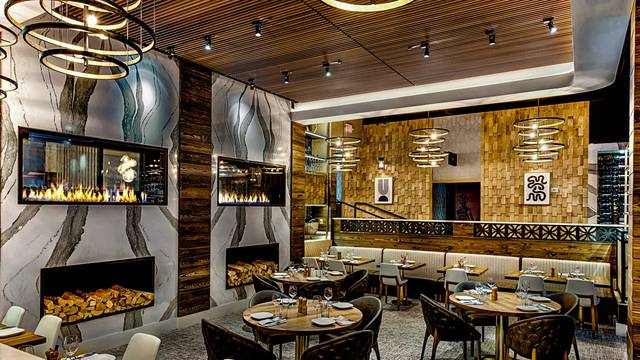Instagrammable Restaurants Islamabad: Picture-Perfect Dining Knowledge
Instagrammable Restaurants Islamabad: Picture-Perfect Dining Knowledge
Blog Article
Savor Authentic Asian Cuisine With a Pan-Asian Twist for a Culinary Adventure
Getting started on a culinary journey via authentic Oriental cuisine, enhanced with a Pan-Asian twist, provides a special possibility to check out the abundant tapestry of flavors that define the area's diverse culinary traditions. This experience invites you to enjoy the elegant equilibrium of preferences-- pleasant, salty, spicy, and sour-- integrated by aromatic natural herbs and seasonings. Think of the ingenious fusion of Thai curry and ramen or the unanticipated delight of sushi burritos. As you contemplate these enticing dishes, take into consideration the cultural stories and historical influences that shape them, each bite supplying a story waiting to be discovered.

Checking Out Pan-Asian Tastes
In the realm of worldwide gastronomy, Pan-Asian cuisine stands apart for its impressive variety and the harmonious interaction of tastes from different Eastern cultures. This cooking approach celebrates the rich customs and unique ingredients located throughout the continent, producing a tapestry of tastes that is both appealing and satisfying. Key to Pan-Asian food is its capability to balance contrasting flavors-- pleasant, salty, spicy, and sour-- while highlighting the quality and quality of each active ingredient.
From the umami-rich soy sauce of Japan to the fiery chili peppers of Thailand, Pan-Asian cuisine uses a considerable palette of flavors. These aspects are typically combined in creative methods, improving recipes with layers of complexity. For circumstances, using aromatic natural herbs such as lemongrass and cilantro, usual in Vietnamese and Thai cuisine, includes a refreshing brightness to recipes, while the incorporation of coconut milk supplies a creamy, rich texture.
The emphasis on fresh fruit and vegetables and fragrant spices guarantees that each dish is not just a banquet for the preference buds yet also for the detects. Pan-Asian cuisine welcomes restaurants to embark on a culinary trip, exploring the huge and varied landscapes of Asian gastronomy with every bite.
Combination Recipes to Attempt
While Pan-Asian food is commemorated for its standard tastes, the modern culinary landscape is progressively welcoming fusion dishes that blend these traditional aspects with influences from other areas. This ingenious method not just honors the abundant heritage of Eastern cookeries but additionally introduces unique preference experiences that appeal to contemporary palates.
An archetype of such a combination recipe is the Korean-Mexican taco, where marinaded bulgogi beef is covered in a warm tortilla, covered with kimchi and a spicy gochujang-infused salsa. This mix weds the strong, full-flavored tastes of Korea with the vibrant, fresh components of Mexican food. In a similar way, sushi burritos have actually gained appeal, amalgamating the delicate virtuosity of Japanese sushi with the passionate, hand-held convenience of a burrito, typically including blend ingredients like tempura shrimp and avocado with a drizzle of wasabi mayo.
Another notable dish is Thai curry ramen, which infuses the velvety, aromatic flavors of Thai curry right into the comforting brew of typical Japanese ramen, developing an unified mix that tantalizes the senses. These fusion meals expand beyond simple novelty; they represent a culinary discussion in between cultures, encouraging expedition and advancement in the globe of Pan-Asian food.
Essential Components and Seasonings
To really value Pan-Asian food, one must comprehend the vital components and seasonings that develop its foundation. This varied cooking style draws from an abundant tapestry of Asian customs, employing an unified blend of tastes and textures. Key components consist of soy sauce, fish sauce, and oyster sauce, which pass on a savory umami depth necessary to Oriental recipes. Corresponding to these are rice vinegar and mirin, lending a fragile level of acidity and sweetness.
Aromatic components are critical, with lemongrass, ginger, and garlic being ubiquitous across different Pan-Asian recipes. These ingredients offer a great smelling base that enhances the intricacy of flavors. Spices such as star anise, cardamom, and cinnamon introduce heat and character, echoing impacts from regions like China and India.

Food Preparation Strategies and Tips
Understanding the art of Pan-Asian food requires familiarity with its distinct cooking methods, each contributing to the lively tapestry of flavors this culinary practice is celebrated for. Central to these approaches is the stir-fry, a rapid cooking technique that maintains the dietary honesty and dazzling colors of ingredients. Utilizing a wok, the stir-fry technique permits even warm distribution, important for achieving the characteristic appearance and flavor balance of Pan-Asian meals.
One more fundamental technique is steaming, specifically prevalent in Chinese food. This mild approach maintains the all-natural flavors and nutrients of components, making it perfect for seafood and vegetables. Dumplings, a beloved staple, commonly gain from steaming, resulting in soft, delicious structures.
Barbecuing, additionally essential, passes on smoky midsts to meals such as Korean bulgogi or Japanese yakitori (Fine dining experience Islamabad). This technique usually entails marinading active ingredients, allowing flavors to permeate deeply prior to cooking over an open flame or warm plate
Finally, mastering the art of balancing tastes-- pleasant, sour, salty, bitter, and umami-- is crucial. Correctly layering these elements can elevate a recipe from ordinary to extraordinary, providing a complicated and satisfying cooking experience that personifies that site the significance of Pan-Asian cuisine.
Dining Experiences Worldwide
Around the world, Pan-Asian cuisine provides an unequaled dining experience, commemorated for its abundant tapestry of tastes and lively discussions. This culinary phenomenon has transcended social boundaries, recording the hearts and palates of food lovers worldwide. In multicultural cities fresh York, London, and Sydney, Pan-Asian restaurants act as melting pots where culinary traditions from Thailand, Japan, China, and past merge, providing restaurants with an eclectic mix of meals that highlight the area's diversity.
The worldwide allure of Pan-Asian cuisine hinges on its capacity to offer both credibility and technology. Chefs masterfully marry typical ingredients such as lemongrass, soy sauce, and miso with modern methods, leading to dishes that are both familiar and refreshingly brand-new. This fusion permits diners to start a cooking journey that respects heritage while embracing modernity.
Additionally, eating experiences are elevated with attentively developed atmospheres that reflect the values of Pan-Asian appearances. From minimal Japanese-inspired interiors to vivid Thai-themed rooms, each dining establishment uses an one-of-a-kind atmosphere that complements the cooking offerings. As an outcome, patrons are our website not merely consuming a dish yet partaking in a cultural experience, making Pan-Asian dining an absolutely worldwide phenomenon.
Verdict
The exploration of Pan-Asian cuisine supplies a profound understanding of the detailed interaction of flavors and culinary practices throughout Asia. By accepting blend recipes such as Thai curry ramen and sushi burritos, the culinary journey not just highlights the flexibility of standard components but likewise showcases innovative modern strategies. This gastronomic journey, enriched by cooking approaches and important flavors, offers an one-of-a-kind opportunity to appreciate the multiculturalism and culinary virtuosity that define Pan-Asian food on a worldwide range.
Embarking on a cooking journey via authentic Asian cuisine, improved with a Pan-Asian twist, supplies an unique chance to discover the abundant tapestry of flavors that specify the region's varied culinary customs.In the realm of global gastronomy, Pan-Asian food stands out for its impressive variety and the harmonious interaction of tastes from numerous Asian societies. Key to Pan-Asian food is its capability to stabilize different tastes-- sweet, salty, spicy, and sour-- while highlighting the quality and quality of each component.

Report this page